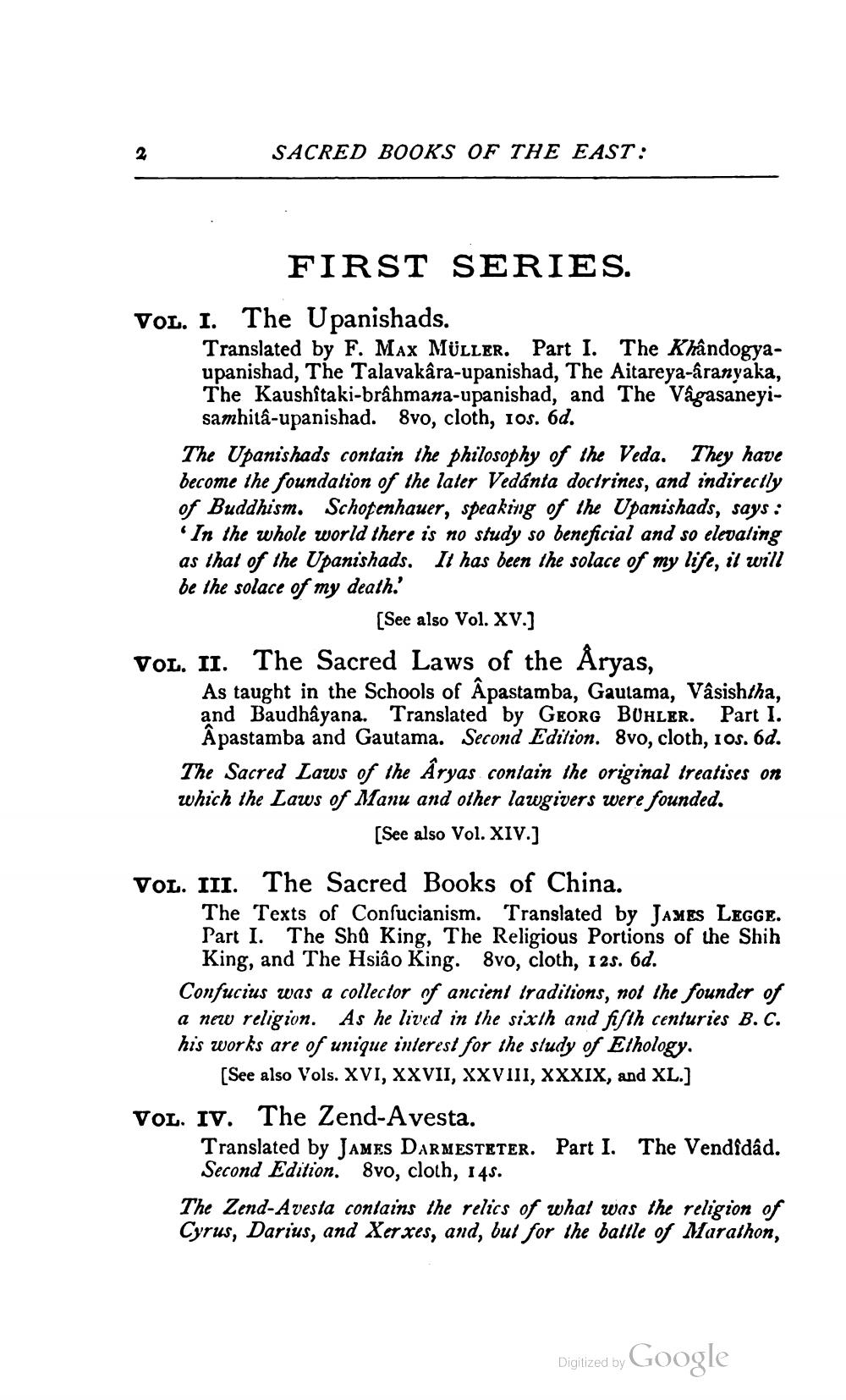________________
SACRED BOOKS OF THE EAST:
FIRST SERIES. VOL. I. The Upanishads.
Translated by F. Max Müller. Part I. The KhândogyaUpanishad, The Talavakâra-upanishad, The Aitareya-âranvaka. The Kaushitaki-brâhmana-upanishad, and The Vâgasaneyisamhitâ-upanishad. 8vo, cloth, ios. 6d. The Upanishads contain the philosophy of the Veda. They have become the foundation of the later Vedanta doctrines, and indirectly of Buddhism. Schopenhauer, speaking of the Upanishads, says:
In the whole world there is no study so beneficial and so elevating as that of the Upanishads. It has been the solace of my life, it will be the solace of my death.'
[See also Vol. XV.] VOL. II. The Sacred Laws of the Åryas,
As taught in the Schools of Âpastamba, Gaulama, Vâsishtha, and Baudhayana. Translated by GEORG BÜHLER. Part I. Åpastamba and Gautama. Second Edition. Svo, cloth, 1os. 6d. The Sacred Laws of the Aryas contain the original treatises on which the Laws of Manu and other lawgivers were founded.
(See also Vol. XIV.]
VOL. III. The Sacred Books of China.
The Texts of Confucianism. Translated by JAMES LEGGE. Part I. The Shů King, The Religious Portions of the Shih
King, and The Hsiâo King. 8vo, cloth, 125. 6d. Confucius was a collector of ancient traditions, not the founder of a new religion. As he lived in the sixth and fifth centuries B.C. his works are of unique interest for the study of Ethology.
[See also Vols. XVI, XXVII, XXVIII, XXXIX, and XL.] VOL. IV. The Zend-Avesta.
Translated by JAMES DARMESTETER. Part I. The Vendidad.
Second Edition. 8vo, cloth, 145. The Zend-Avesta contains the relics of what was the religion of Cyrus, Darius, and Xerxes, and, but for the battle of Marathon,
Digitized by Google




